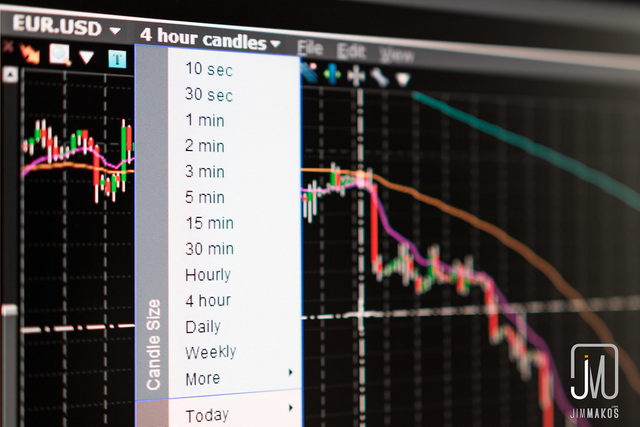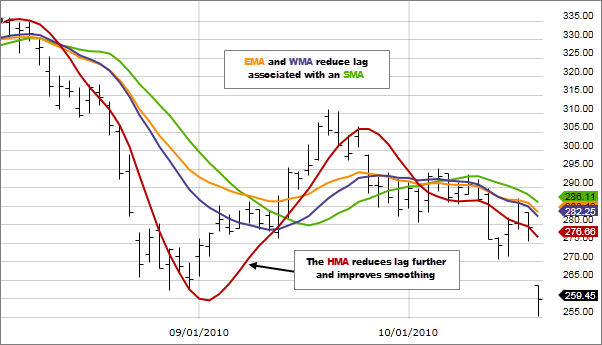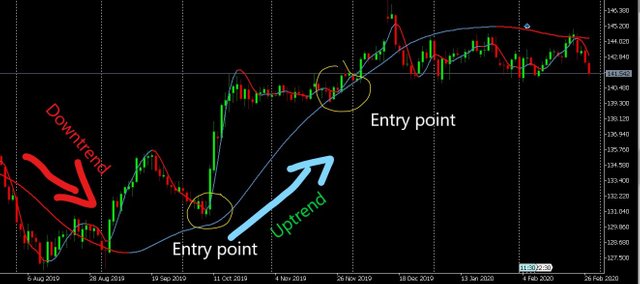How to create a Trading Strategy - A structured process

To operate on the markets, you need a strategy.
For many people, the main question is: What strategy must i use?
There is hundred of different indicators avaiable today, and each of them give a different piece of information about one or another caracteristic of the asset that is being traded.
A wrong assumption that a lot of people make when they start to operate on financial markets is that you just need to pick some good indicators and you have a strategy ready to go.
What make this wrong is that, like i said, indicators only show a part of the information, and it's only one piece of the problem.
A true trading strategy must cover:
- When to enter to enter a position (entry point)
- When to exit that position (profit/exit point)
- How easy it is to identify the entry and exit points
- What timeframe will this strategy be used
- How big will be that position (lot size)
- How much is the risk that will be taken on the trade (stop loss)
- Will there be a protection (hedge) if the trade go the wrong way?
- How accurate is the strategy? (right vs wrong entries)
- How profitable is the strategy (risk vs reward ratio)
And the most important thing about the strategy: Are you comfortable with the strategy?
After 3 years of learning, i think i might have found a profitable strategy that i am comfortable with, and i am going to build it up here, to show you my proccess of building a strategy.
Choosing the indicators
The indicators you will be using for the strategy is probably the most important part of creating a strategy.
They will be base of your decisions, and you must fully understand what kind of information they are providing, and be confortable while using them.
Also, the kind of strategy you are trying to implement must match with the indicator. For example, if you are going to try to "surf" the trend, you must use trend indicators.
For the strategy i am building, my aim is to find the trend direction, and try to follow that trend as long as possible. Therefore, i will be using three indicators:
1 & 2 - Slow Hull Moving Average and Fast Hull Moving Average

image source
The Hull Moving Average(HMA) works the same way as the others moving averages (SMA, EMA, WMA), but it reduces the price lag by a lot.
Here is how it's calculated:
1 Calculate a Weighted Moving Average with period n / 2 and multiply it by 2
2 Calculate a Weighted Moving Average for period n and subtract if from step 1
3 Calculate a Weighted Moving Average with period sqrt(n) using the data from step 2
HMA= WMA(2*WMA(n/2) − WMA(n)),sqrt(n))
For this strategy, i will be using this indicators in two ways:
- A slow HMA (100-160 period), to identify the current trend. When the HMA is going up, the trend is upward. When the HMA is going down, the trend is downward
- A fast HMA (6-16 period), to identify entry points. When the fast HMA start to go the same direction as the trend (slow HMA), it will be my entry point.

Both HMAs will also be used as exit and protection (hedge) points, but i will detail it a bit later.
3 - Ichimoku clouds
Ichimoku clouds is a bit harder to explain and if you want to learn it in detail check this article.
While this indicator draws 5 lines, i am going to use only two of them: senkou span A, senkou span B
These two lines plots on the chart what is called the cloud, wich also work as a trend indicator:
- When the price is above the cloud, it's an upward trend.
- When the price is below the cloud, it's an downward trend.

While this is a good trend confirmation, an interesting thing to notice about the Ichimoku clouds is that they show a 'resistance area', since when the price go through the cloud, it is an indication of trend reversal.
Because of that, i will be using the Ichimoku cloud to define where i will set the stop loss of each order.
Defining entry points signals
After the choice of the indicators you will be using, it's time to design how you are going to use their information to enter a trade position.
In my strategy, to position myself on a trade, i will be using the HMA described above as a signal.
My strategy aims to enter a trend reversal as soon as possible, so here is the point of decision:
1 - Identify the trend
I will be using the Slow HMA to identify the trend:
- If the Slow HMA is rising, the trend is upward
- If the Slow HMA is declining, the trend is downward
2 - Find the points where the price have a correction before returning to the trend.
No matter what the price trend is, the price of the assets will suffer corrections along the way before return to the trend.
The price corrections are the bests point of entry on a trend.
That way, i will be using the Fast HMA to monitor when a correction is probably ending.
- When the Fast HMA of an asset is going againt the Slow HMA (main trend), i will start to keep an eye on that asset.
- When the Fast HMA return to the same direction as the Slow HMA, i will enter the trade.
Defining exit points signals
Knowing when to exit a trade is as important as knowing when to enter.
Trading is about extracting money from the markets, so you must have a clear definition of when you want to close a trade and take the profit.
The longer you expose yourself on a position, the more you might not be able to get the best value on your trade.
In the strategy i am building, the ideal situation is:
- Enter the trade when the trend start on one direction
- Exit the trade when the trend start to go on the other direction
Since the indicator that is giving me the information about the trend direction is the Slow HMA, i will be using it to define the exit point of an strategy:
- When the Slow HMA change te direction, i will close the trade.
Stop Loss and Take Profit orders (risk vs reward)
To be successful as a trader, one of the most important aspects of each trade is to know how much risk is you are willing to take and how much return that risk might bring.
This is a really extense subject, and i will have to write a whole article only to talk about it, but here is a good starting point and here is another one detailing a good process to set your risk/reward ratio on your trades.
Since on the strategy i am building the reward (take profit order) is going to be a floating point (see exit point signal above), i will only have to define how big will be the risk.
In this case, i was able to see two interesting informations that i could extract from the indicators i am using:
- When the Slow HMA change direction, the price is already on the "right" side of the trend:
When the Slow HMA start to go up, the price is above it.
When the Slow HMA start to go down, the price is below it.
This information allow me to set the first stop loss of the trade (the risk) exactly at the value of the Slow HMA at the time i enter the position.
- When the price go through the Ichimoku cloud, the price resistance have been lost, and a trend reversal is likely to happen.
With this information, i can move the stop loss to follow the Ichimoku cloud lower side (in the case of a buy order), wich will allow me to take some profit if some unexpected and sudden price movement happen.
Position protection (Hedge)
Depending on the market and the asset, your trading positions can be protected by a hedge.
Hedges are usually used on long-term positions, as a way for the trader to protect himself from the markets short-term volatility, locking up profits already gained, or reducing a loss.
Basically, you create a hedge when you open a trading position on the opposite direction. For example:
- You open a buy trade on the EURUSD market at the price of 2.0000, with a target profit at 2.5000 and Stop Loss at 1.9000
- The price rise to 2.2000, but then it start to move on the other direction.
- You can open a sell trade at 2.2000 with take profit at 1.9000 (the same stop loss as the buy order.
- Now when the price reach 1.9000, instead of have a loss of 0.1, you will get a profit of 0.2, because of the difference between the buy and sell orders.
But you have to be careful, and fully undestand what you are doing and how it fits your strategy, because a wrong placed hedge can double your lossess.
- In my strategy, every time i am positioned on a trade, i will put a hedge (open a trade on the opposite direction) when the Fast HMA start to move on the opposit direction of the trend, and close the hedge, when the Fast HMA return to the same direction as the trend.
Timeframes and not-trading times
The time-frame where you will be trading is an important part of the strategy.
A strategy might work on a 1 hour time-frame, and but be a disaster in a longer time-frame.
Also, you must always consider if there is any fees if you keep an asset/position for more than a day. For example:
- In spot trading (directly buying the asset) you don't pay any fees if you hold the position for more than a day, because you own the asset.
- In margin trades (Futures, CFDs, etc), usually there is a interest rate that is charged daily on the margin you are using to trade.
- Forex markets usually have a swap cost that is different on each trade direction, that can be positive or negative.
This means that your must consider in you strategy if you will have a cost to hold a position, and decide if it is worth or not to hold that position at the end of the day.
Besides that, some market have some already known events where there is a big change on price volatily that can break any well-tought trading strategy:
- In Forex market for example, economic news with hight impact (like Non-farming payroll monthly report).
What happen in these cases is that the big players (aka whales) position themselves for long-term positions based on the result of these events, wich create a big influx of money on the market, and cause a big price change in a short time.
It is important to know these recurrent effects, and decide if your strategy can survive them or not
Tying everything up
A good practice i use to finish the process of creating a trading strategy is to write it all down as a programming language logic. This can help to easy the decision process of entering or exiting an operation.
Using the strategy i built as an example:
# HMA+Ichimoku Trading Strategy
Slow HMA Direction = Long term trend
Fast HMA Direction = Short term trend
ON EVERY NEW CANDLE Do this
IF there is NO position opened;
(not equal)
IF Short term trend == Long term trend
Do nothing
(equal)
IF Short term trend = Long term trend
Open trading position on the same direction of Long term trend
Set Stop loss = Slow HMA value
IF there is a position opened;
(using buy position as example)
IF Long term trend change direction
Close position
IF Ichimoku cloud lower limit < Last candle close price
Move Stop loss = Ichimoku cloud lower limit
IF Short term trend == Long term trend
Open a sell trade (hedge)
Set Hedge Take profit = buy trade Stop loss
Set Hedge Stop Loss = Short term trend value
WHEN Price close above the hedge position
MOVE stop loss to a positive position (take some profit if the trend resume)
WHEN Short term trend = Long term trend
Close Hedge position
There you go. Writing the strategy in a program logic form helps to remove part of the emotion from the strategy decision.
Also, it can help to clarify the strategy if at some point you want to program a robot, or ask someone to do it for you.
Most important rule: Test the strategy effectiveness before putting real money on it
On paper, all strategies might work. But don't use it before testing on demo/dummy/paper accounts.
Besides watching how the strategy will work on a real-time market, it also helps you understand the best way to use it.
Conclusion
Trading strategies are the core business of a trader, and it's also the riskier part of the job.
Choosing a wrong strategy, or not testing the strategy enough can easily wipe out your trading account.
So it is really important that you understand how your strategy works and wich are the real signs to enter or exit a trade.
And as always, never stop trading.
Want to talk more about trading? Join Traders School Community

Wow, very good researched and described article! Like it, since I am into trading for a few months too!
Keep it up bud!
Thanks. Glad to be helpful!
It’s been while that I started learning tradings so that I can start investing in stocks and crypto the things I get by paying money you are really showing all that in a simple and understanding form for free. I have saved this post link for future references.
Thanks for sharing your skills
Well, i gotta say that my main reason to share this 'method' i mostly for my benefit, since writing helps me understand things better.
But it's an extra satisfaction to see that this also helps other people.
Thank you for posting within our community @phgnomo
Please try to remember also to share it within our telegram channel (in the future). This will help me greately with content discovery.
Post resteemed already. Upvote on the way.
Hi @phgnomo
Solid read. I'm not much into trading myself (burned myself to many times) but I can see real value and experience being shared here.
I cannot really share valuable feedback since I'm already avoiding trading at all cost. Post upvoted.
Yours, Piotr
I know some people don't like the trading aspect of the markets, and it takes a really long time and a lot of learning to start to get profitable.
I started learning about it (and financial markets in general) around 4 years ago, and only this year i started to get profitable.
It's a long and hard road...
Hi again @phgnomo
That's a long journey.
Thank you for your reply.
Can I ask you for little favour? I joined contest called "Community of the week" with project I manage and I would be grateful if you could RESTEEM it and help me get some exposure and drop some encouraging comment :)
Link to my post: on steemit or on steempeak
Thanks :)
Yours, Piotr
Hi again @phgnomo
That's a long journey.
Thank you for your reply.
Can I ask you for little favour? I joined contest called "Community of the week" with project I manage and I would be grateful if you could RESTEEM it and help me get some exposure and drop some encouraging comment :)
Link to my post: on steemit or on steempeak
Thanks :)
Yours, Piotr
Really great write up! So many crypto traders get stuck on which coin to buy/trade, and don't pay enough attention to developing a successful strategy.
Oh, that's interesting. I'm just a novice trader, and I'm pretty sure that this information will help me once I start getting more into that field.
Well, I believe that in order to come up with a working trading strategy on your own, it's necessary to analyze the published trading strategies . It can help you understand their pros and cons, and you'll be able to develop a strategy that'll work the best with your portfolio. But in general, you can work with an existing strategy and profit as well.